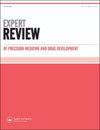Patient-derived organoid analysis of drug resistance in precision medicine: is there a value?
IF 1.2
Q4 PHARMACOLOGY & PHARMACY
Expert Review of Precision Medicine and Drug Development
Pub Date : 2020-01-02
DOI:10.1080/23808993.2020.1715794
引用次数: 26
Abstract
Cancer is the main health problem with high morbidity and mortality. The worldwide annual incidence and deaths from cancers are estimated in millions [1,2]. Hence, cancer therapy must be continuously promoted and developed. Cancer study, like in other diseases, highly depends on representative and reliable models. However, the tumor is not uniform, but rather a heterogenic and highly variable and complex than other diseases, rendering its study extremely difficult, expensive [3]. The most common treatment methods for cancers are based on surgery [4], chemotherapy [5], radiotherapy [6], and immunotherapy [7]. The response of cancers to these various treatment strategies differs according to tumor subtype, clinical stage, and associated risk factors and unfortunately fails to limit the progression of cancer in various cases. Even the same tumor of the same organ or tissue differs in response to therapy among patients and the recurrence and metastasis which are associated with high resistance to therapy are main issues [8]. Also, chemotherapy affects the quality of life because of its potential side effects and therefore disfavored by many patients. Therefore, suitable models to expect the treatment response with high precision are of extreme need toward more personalized treatment of patients. Experimental models are assigned to understand the pathobiology, identify diagnostic and prognostic biomarkers of cancer progression and establish novel potent and effective therapies. To date, the available treatment protocols seem inadequate to prevent the resistance to therapy as well as the recurrence and progression of cancer. Therefore, several experimental models of to study cancer development and progression including rats and mice as well as the in vitro culture models of cell line, 2D cell, induced pluripotent stem cell (iPSCs) lines, spheroids, 3D organoids, organotypic tissue slice cultures, patient-derived tumor xenografts are developed [9–11] and certainly, they confer valuable tools for preclinical pharmacological assessment. Cancer stem cells (CSCs) are tumor-initiating cells capable of conserving cellular heterogeneity, self-renewal, epithelial to mesenchymal transition, differentiation to form all kind cells in a given tumor [12] and drive the tumor growth, metastasis and most importantly, the resistance to conventional anticancer agents [13–22]. Therefore, the total eradication of CSCs is crucial for the successful treatment of cancers. Thus, understanding the mechanism of response and resistance of CSCs to therapy and developing personalized therapy is the cornerstone for treatments of cancer in cancer patients. Currently, the selection of the correct tool to use in the laboratory to elucidate the mechanism of CSCs’ resistance to therapy can depend on the question on hand, but also on the resources (and knowledge) available. Among them, organoids constitute the more reasonable method in recapitulating the in vivo microenvironment of the tumor, and easier handling as well as high throughput screening than slice cultures or xenografts. During the past decade, researchers have made substantial progress in the field of organoid biology, and organoid systems have already been reviewed in detail elsewhere [21,23,24].精准医学患者来源类器官耐药分析:有价值吗?
癌症是主要的健康问题,发病率和死亡率都很高。据估计,全球每年癌症的发病率和死亡人数以百万计[1,2]。因此,癌症治疗必须不断地推广和发展。癌症研究和其他疾病一样,高度依赖于具有代表性和可靠性的模型。然而,与其他疾病相比,肿瘤并不均匀,而是一种异质性、高度可变和复杂的疾病,这使得其研究极其困难和昂贵[3]。癌症最常见的治疗方法是基于手术[4]、化疗[5]、放疗[6]和免疫疗法[7]。癌症对这些不同治疗策略的反应因肿瘤亚型、临床分期和相关风险因素而异,不幸的是,在各种情况下,未能限制癌症的进展。即使是同一器官或组织的同一肿瘤,患者对治疗的反应也不同,与高耐药性相关的复发和转移是主要问题[8]。此外,化疗由于其潜在的副作用而影响生活质量,因此不受许多患者的欢迎。因此,对于更个性化的患者治疗,迫切需要合适的模型来期望高精度的治疗反应。实验模型被分配来理解病理生物学,识别癌症进展的诊断和预后生物标志物,并建立新的有效疗法。到目前为止,现有的治疗方案似乎不足以防止对治疗的耐药性以及癌症的复发和进展。因此,开发了几种研究癌症发展和进展的实验模型,包括大鼠和小鼠,以及细胞系、2D细胞、诱导多能干细胞(iPSC)系、球体、3D类器官、器官型组织切片培养物、患者来源的肿瘤异种移植物的体外培养模型[9-11],当然,它们为临床前药理学评估提供了宝贵的工具。癌症干细胞(CSCs)是肿瘤起始细胞,能够保存细胞异质性、自我更新、上皮向间充质转化、分化以在特定肿瘤中形成所有类型的细胞[12],并驱动肿瘤生长、转移,最重要的是,驱动对传统抗癌药物的耐药性[13-22]。因此,彻底根除CSCs对于成功治疗癌症至关重要。因此,了解CSC对治疗的反应和抵抗机制,开发个性化治疗是癌症患者治疗癌症的基石。目前,在实验室中选择正确的工具来阐明CSC对治疗的抵抗机制可能取决于手头的问题,也取决于可用的资源(和知识)。其中,类器官构成了更合理的方法来概括肿瘤的体内微环境,并且比切片培养或异种移植物更容易处理和高通量筛选。在过去的十年里,研究人员在类器官生物学领域取得了实质性进展,其他地方已经对类器官系统进行了详细的综述[21,23,24]。
本文章由计算机程序翻译,如有差异,请以英文原文为准。
求助全文
约1分钟内获得全文
求助全文
来源期刊

Expert Review of Precision Medicine and Drug Development
PHARMACOLOGY & PHARMACY-
CiteScore
2.30
自引率
0.00%
发文量
9
期刊介绍:
Expert Review of Precision Medicine and Drug Development publishes primarily review articles covering the development and clinical application of medicine to be used in a personalized therapy setting; in addition, the journal also publishes original research and commentary-style articles. In an era where medicine is recognizing that a one-size-fits-all approach is not always appropriate, it has become necessary to identify patients responsive to treatments and treat patient populations using a tailored approach. Areas covered include: Development and application of drugs targeted to specific genotypes and populations, as well as advanced diagnostic technologies and significant biomarkers that aid in this. Clinical trials and case studies within personalized therapy and drug development. Screening, prediction and prevention of disease, prediction of adverse events, treatment monitoring, effects of metabolomics and microbiomics on treatment. Secondary population research, genome-wide association studies, disease–gene association studies, personal genome technologies. Ethical and cost–benefit issues, the impact to healthcare and business infrastructure, and regulatory issues.
 求助内容:
求助内容: 应助结果提醒方式:
应助结果提醒方式:


